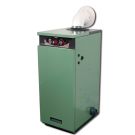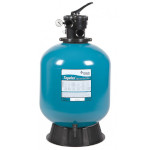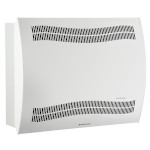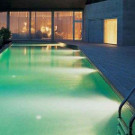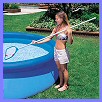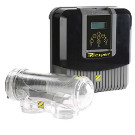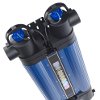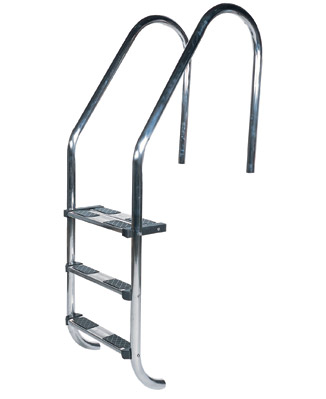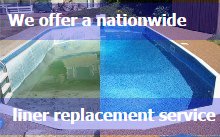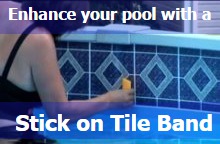Newsletter
PoolStore no longer use Facebook or Twitter. To get the latest news, offers and top tips please sign up for our newsletter.
Trusted Merchant

Trustpilot
We joined Trustpilot in Spring 2023.
Category
Swimming Pool Equipment
The filter is one of the most important pieces of swimming pool equipment. It traps within it particles dirt and debris and returns clean water back to your swimming pool. Inground swimming pools and large above ground swimming pools usually have sand filters. These consist of a large cylindrical chamber filled with special filter sand. Pool water is pumped in under pressure at the top and works its way down the filter and leaves at the bottom. On the way and dirt in the water should be trapped in between the particles of sand. Smaller pools usually have a paper cartridge filter. The water is pumped through the filter cartridge and the dirt is trapped by the paper.
Filters need to cleaned regularly. In the case of sand filters the water must be re-directed up through the sand bed and out to waste. On the way up it flushes out the dirt. This is called back washing. Sand filters come with a valve to change the direction of water flow it is known as the multiport valve. It can be mounted on the side of the filter or on the top. If it is side mounted there is usually a glass dome in top of the filter to view the water. Paper cartridge filters are cleaned by removing them and hosing them off but they dont last very long so it is important to replace them with new ones regularly.
Another important piece of swimming pool equipment is a heater. PoolStore sells a full range of swimming pool heaters to suit any swimming pool from a 10ft splasher pool to a semi-commercial swimming pool.
When choosing a swimming pool heater the first thing you need to decide is what source of energy you are going to use. If you have mains gas then look first at the gas fired swimming pool boilers. If you don’t have gas or your pool is not very big then look at electricity. There are two types of electric swimming pool heaters, the direct heater like the Elecro heater and the Thermalec swimming pool heaters or the Heat Pump. The Heat Pump uses much less electricity but is much more expensive to buy than a direct electric model. If you have a pool volume of less than 5000 gallons then an Elecro heater is the one for you. If you have a big pool the direct electric heaters are going to be very costly on electricity so an Oil fired swimming pool heater may be best for you.
A heat exchanger connects to your existing domestic boiler from a feed pipe before your radiator system. It utilises any spare capacity your boiler has in the summer when it is not required to heat your house. It is cheap to buy but involves a lot of pipework.
All the gas swimming pool heaters can be run on bottled gas and the Easiheat is a portable gas bottle swimming pool heater ideal for splasher pools because it does not have to be connected to the pool’s pump, it has its own pump.
Swimming pool pumps are categorised by their Horse Power (HP), although they are often badged with a Kilowatt rating (KW, see below). Pump manufacturers develop a model and then sell it in, usually, 4 Horse power sizes. So for example the company Sta-Rite have, among other things, their Dyna-Glas pump and it comes in 0.5, 0.75, 1.0 and 1.5 Horse Power.
The important thing for the pool owner is not so much the Horse Power but the amount of water the swimming pool pump can move in an hour. The amount of water it can move depends upon how much resistance the pipes etc. put upon it. The resistance of the pipes etc. is measured in 'metres of head'. It is possible to work out the resistance in your pool pipework but it is very complicated. Most domestic pools have a resistance of 10 to 13 metres. As a rule of thumb, you should circulate your entire pool volume in 8 hours, so your hourly capacity should be the volume of your pool divided by 8.
So, for a 15ft x 30ft pool at an average of 5 ft deep, our volume calculator (in the help section) tells us the volume is 64 cubic metres. Divide 64 by 8 and you get 8m3 per hour required. If this was your pool you would need to choose a pump with a capacity greater than 8m3 per hour. In most cases you will see a 0.75 Horse Power pump is what you need.
When you look at the plate on your pump it often quotes the power in KW. To convert KW to HP (approximately) multipy by 1.33.

Christmas Holiday Closing Hours Poolstore will close on Friday, December 19th, at 1 p.m. and reopen on Monday, January 5th, at 9 am. Our last day for dispatching goods will be for orders received before 1 p.m. on Thursday, December 18th. Any orders received after this will be dispatched on Monday, January 5th, 2026.



